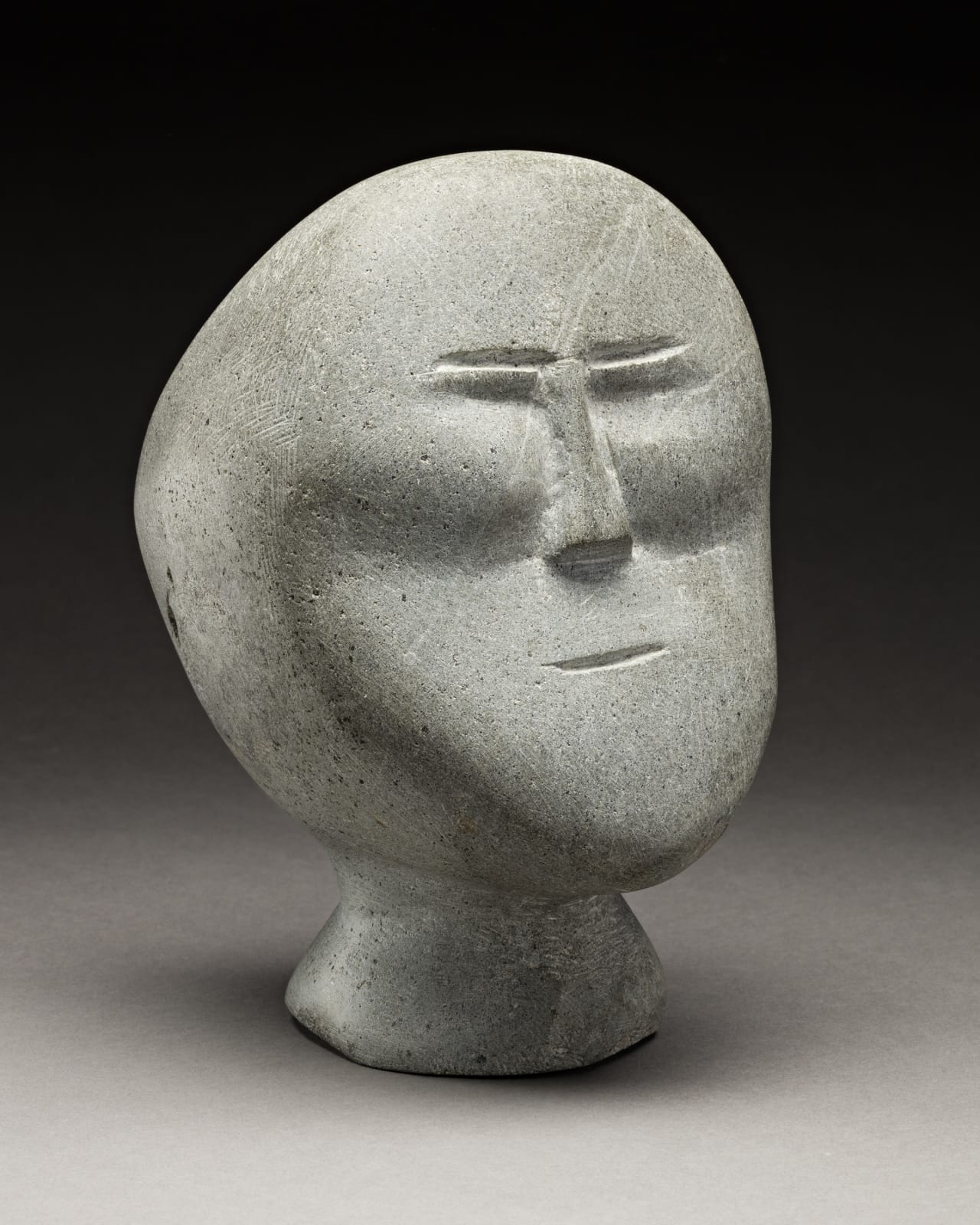-
Artworks
JOHN TIKTAK, R.C.A. (1916-1981) KANGIQLINIQ (RANKIN INLET)
Head, c. 1964-5stone, 8 x 5 x 5.75 in (20.3 x 12.7 x 14.6 cm)
unsigned.
LOT 16
ESTIMATE: $25,000 — $35,000Further images
John Tiktak is justly famous for his moving depictions of solitary human figures, mothers and children, and clusters of heads and faces. Whether the sculptures are coolly elegant or more...John Tiktak is justly famous for his moving depictions of solitary human figures, mothers and children, and clusters of heads and faces. Whether the sculptures are coolly elegant or more brutal in style, it is often the individual heads and faces that lend these works their character and impact. For example, the face of the mother in the artist’s majestic Mother and Child of 1966 – arguably his greatest work – is serene, elegant, and noble. Single heads by the artist can be similarly elegant; a prime example is Head of c. 1965-66 (First Arts, May 2019, Lot 12).
Head has all the hallmarks of Tiktak’s classic facial style of 1964-66: the eyes squinted as if against the bright sun; high cheekbones flanking an almost Grecian nose; a small, narrow mouth set against a prominent chin. The features are simplified, stripped down, almost minimalist, as is the overall form of the head itself. The actual shape of the head is not naturalistic, and certainly does not conform to most people’s ideal of beauty. Yet Head is one of the most powerful, evocative examples we have ever seen. To our eyes it is one of the most beautiful sculptures of a human head we have ever encountered. What it lacks in detail or pretty proportions it more than makes up for in pure sculptural form. Tiktak’s Head possesses what Norman Zepp succinctly describes in the introduction to his landmark catalogue Pure Vision: The Keewatin Spirit as “strength and purity of vision” in spades. Astounding.
Literature: For the 1966 Mother and Child see Ingo Hessel, Inuit Art: An Introduction (1998), p. 97; George Swinton, Tiktak (Winnipeg: Gallery One-One-One, University of Manitoba, 1970), cat. 27; and elsewhere. For other figures see also in the 1970 catalogue see cats. 9, 18, 26, 28, 30, 34. For an important contemporaneous depiction of a head by Tiktak see First Arts, May 2019, Lot 12. See also Ingo Hessel, Arctic Spirit: Inuit Art from the Albrecht Collection at the Heard Museum (Vancouver: Douglas & McIntyre/Phoenix: Heard Museum, 2006), p. 136 (also shown in Walker’s Auctions, Ottawa, Nov. 2015, Lot 51); The Eskimo Art Collection of the Toronto-Dominion Bank (Toronto, 1972), cat. 46; George Swinton, Sculpture of the Inuit (Toronto: M&S, 1972/92), figs. 648, 650. See the section on the artist in Norman Zepp, Pure Vision: The Keewatin Spirit (Regina: Norman Mackenzie Art Gallery, 1986), pp. 96-107. See also Darlene Coward Wight, The Harry Winrob Collection of Inuit Sculpture (WAG, 2008), p. 100. See also Walker’s Auctions, Ottawa, May 2016, Lot 25; May 2018, Lot 76.
Provenance
Marion Scott Gallery, Vancouver, BC;
Acquired from the above by Fred and Mary Widding, Ithaca, NY, 3 August 2000.
Exhibitions
Ithaca, NY, Handwerker Gallery, Gannett Center, Ithaca College, Of the People; Inuit Sculpture from the Collection of Mary and Fred Widding, 26 February - 6 April 2008, cat. no. 18Publications
Cheryl Kramer & Lillian R. Shafer eds., Of the People; Inuit Sculpture from the Collection of Mary and Fred Widding, exh. cat., (Ithaca, NY,:Handwerker Gallery, Gannett Center, Ithaca College, 2008), reproduced in colour on the catalogue cover; reproduced again in colour, cat. no. 18.
Join our mailing list
* denotes required fields
We will process the personal data you have supplied in accordance with our privacy policy (available on request). You can unsubscribe or change your preferences at any time by clicking the link in our emails.














